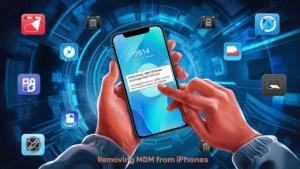In today’s rapidly evolving technology landscape, keeping software and drivers up to date is essential for optimal performance and compatibility. This holds true for developers working with NVIDIA’s Video and Audio Software Development Kit (SDK). In this article, we will guide you through the process of updating the NVIDIA Video and Audio SDK, ensuring that you have the latest features, bug fixes, and performance improvements at your disposal.
The NVIDIA Video and Audio SDK is a powerful toolset that empowers developers to create cutting-edge multimedia applications. It provides a comprehensive set of APIs and libraries for video and audio processing, enabling developers to harness the full potential of NVIDIA’s advanced hardware acceleration capabilities.
Why Update the NVIDIA Video and Audio SDK?
Keeping the NVIDIA Video and Audio SDK up to date is crucial for several reasons:
- Bug Fixes and Stability: Updates often include important bug fixes that improve the stability and reliability of the SDK, ensuring a smooth development experience.
- Performance Enhancements: NVIDIA continually works on optimizing its SDK to deliver better performance. By updating, you can take advantage of the latest optimizations and improvements.
- New Features: Updates may introduce new features, APIs, or functionality that enhance the capabilities of the SDK, enabling you to create more innovative and powerful applications.
- Compatibility: Updating the SDK ensures compatibility with the latest hardware and software configurations, preventing potential compatibility issues and ensuring your applications work seamlessly.
Checking for Updates
Before updating the NVIDIA Video and Audio SDK, it is essential to check for available updates. Follow these steps:
- Visit the official NVIDIA developer website.
- Navigate to the Video and Audio SDK section.
- Look for the “Downloads” or “Updates” page.
- Check if there are any new versions or updates available for the SDK.
Downloading the Latest Version
Once you have identified an available update for the NVIDIA Video and Audio SDK, follow these steps to download it:
- Click on the download link provided on the official NVIDIA website.
- Choose the appropriate version of the SDK for your development environment.
- Review the release notes or documentation accompanying the update to understand the changes and improvements.
Installing the Update
After downloading the latest version of the NVIDIA Video and Audio SDK, follow these installation steps:
- Locate the downloaded installer file on your computer.
- Double-click the installer to initiate the installation process.
- Follow the on-screen instructions provided by the installer.
- Choose the desired installation location and any additional components or options.
- Click “Install” to begin the installation.
- Wait for the installation to complete.
Verifying the Update
Once the installation is complete, it is important to verify that the NVIDIA Video and Audio SDK has been successfully updated. Perform the following steps:
- Launch your preferred development environment or application that utilizes the SDK.
- Ensure that the updated version of the SDK is being recognized and utilized.
- Test the functionality and features that were addressed in the update.
- Monitor for any potential issues or errors during usage.
Troubleshooting Common Issues
While updating the NVIDIA Video and Audio SDK is generally a smooth process, you may encounter some common issues. Here are a few troubleshooting tips:
- Installation Errors: If you encounter errors during installation, ensure that you have administrative privileges and that your system meets the minimum requirements for the SDK.
- Compatibility Issues: If you experience compatibility issues with other software or hardware components, check for any updates or patches that address these conflicts.
- Missing Functionality: If you notice missing functionality or unexpected behavior after the update, review the release notes and documentation for any changes or deprecations that may have affected your implementation.
Best Practices for SDK Updates
To ensure a seamless update process and optimize your development workflow, consider the following best practices:
- Regularly Check for Updates: Make it a habit to periodically check for updates from the official NVIDIA developer website to stay up to date with the latest SDK enhancements.
- Backup Existing Projects: Before updating the SDK, create backups of your existing projects to safeguard against any potential issues during the update process.
- Test Updates in a Controlled Environment: If possible, set up a test environment where you can evaluate the update’s impact on your applications before deploying it to production.
Conclusion
Updating the NVIDIA Video and Audio SDK is essential for developers seeking optimal performance, stability, and compatibility. By following the outlined steps, you can ensure that you have the latest features and bug fixes, enabling you to create impressive multimedia applications with ease.
For More info visit tech Spectrum
FAQs
Q1: Can I update the NVIDIA Video and Audio SDK on different operating systems?
Yes, the NVIDIA Video and Audio SDK supports various operating systems, including Windows, Linux, and macOS. Ensure that you download the appropriate version for your operating system.
Q2: Will updating the SDK affect my existing projects?
Updating the SDK should not directly affect your existing projects. However, it is good practice to back up your projects before performing any updates to mitigate any unforeseen issues.
Q3: How often does NVIDIA release updates for the SDK?
NVIDIA periodically releases updates for the Video and Audio SDK to introduce new features, improvements, and bug fixes. It is recommended to check for updates regularly to stay current.
Q4: Can I roll back to a previous version of the SDK if needed?
While it is generally not recommended to roll back to a previous version, in some cases, it might be necessary. Refer to the NVIDIA developer website or documentation for instructions on how to perform a rollback.
Q5: Are there any additional resources available for NVIDIA Video and Audio SDK developers?
Yes, NVIDIA provides comprehensive documentation, tutorials, and forums where developers can find additional resources and seek support for their SDK-related queries.


















